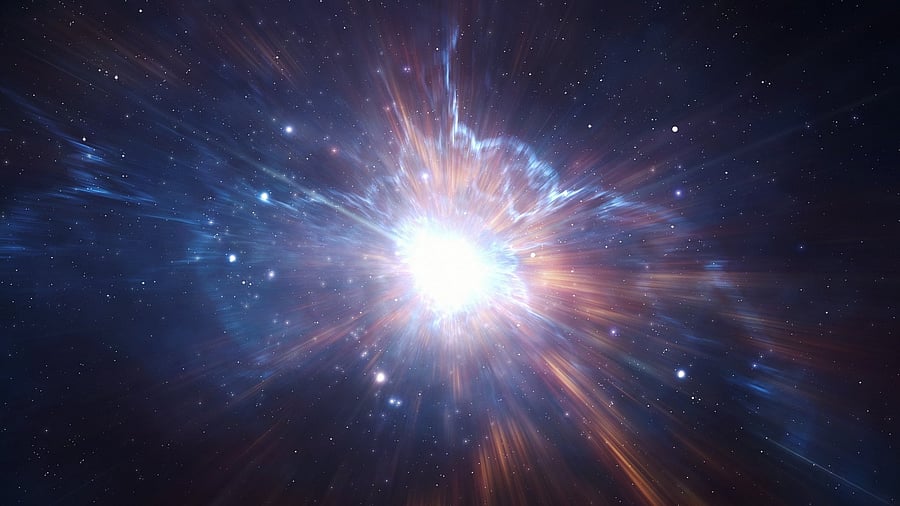
An artist's impression of the Big Bang. For representational purposes.
Credit: iStock Photo
It all began with the Big Bang. You've heard this before—that's what conventional cosmology says. But what if it didn't? What if there was something even before the Big Bang created the universe as we know it?
Scientists probing that question have proposed that dark matter—the mysterious, hypothetical form of matter that does not interact with light or other electromagnetic radiation—may have existed even before the Big Bang.
Let's hold on to that thought for a minute.
What do conventional theories say about the Big Bang? Conventional cosmology posits that before the BIg Bang, the entirety of what we now know as the universe existed as a singularity—a point of infinite density where spacetime was infinitely curved.
These theories go on to suggest that the Big Bang created literally everything—space, energy, matter, dark matter—and that after the event, the universe went through something that is known as cosmic inflation, which caused it to swell in size by a factor of a whopping 10 septillion within a fraction of a second.
However, it is the pre-Big Bang part that is tricky: the laws of physics completely break down prior to the Big Bang, something that has prompted scientists to consider a different approach, one that assumes that an epoch preceded the Big Bang instead of singularity.
While some suggest that this epoch could have been the remnants of the collapse of an earlier universe, others suggest that cosmic inflation may have taken place before the Big Bang.
Now, scientists from the University of Texas (UT) at Austin have suggested that dark matter may well have been formed during this proposed pre-Big Bang inflationary phase.
The physicists described this new model as warm inflation via freeze-in, or WIFI, and described how basically dark matter particles may have come into existence during this inflationary phase from tiny interactions between radiation and particles in a warm 'thermal bath', Science Alert reported.
While the idea of pre-Big Bang cosmic inflation or the pre-Big Bang formation of dark matter is not new, the new study explains the mechanism through which dark matter is produced, in quantities that correspond with actual astronomical observations.
According to the WIFI model, radiation gets produced during exponential expansion (cosmic inflation), which creates a sort of thermal bath, allowing for interactions between tiny particles.
Since the driving force behind cosmic inflation is still not known, scientists have proposed that hypothetical particles called inflations drove the expansion. In the WIFI model, this inflation field loses some of its energy to radiation in the 'thermal bath'. Radiation, in turn, produces dark matter through a process called UV freeze-in.
Technicalities apart, what makes the WIFI model particularly interesting is that, as per calculations, the model yields the amount of dark matter that astronomical observations tell us is actually out there.
While it does not completely solve the mystery of the origins of dark matter, it does provide a plausible hypothesis that supports astronomical observations.
That being said, it is a hypothesis that cannot yet be scientifically verified. However, parts of it could: Science Alert reports that upcoming studies into cosmic microwave background (CMB) radiation, such as CMB-S4, could put the idea of warm inflation to the test.
"If future observations confirm that warm inflation is the correct paradigm, it would significantly strengthen the case for dark matter being produced as described in our framework," study co-author an UT physicist Gabriele Montefalcone was quoted as saying by the publication.
